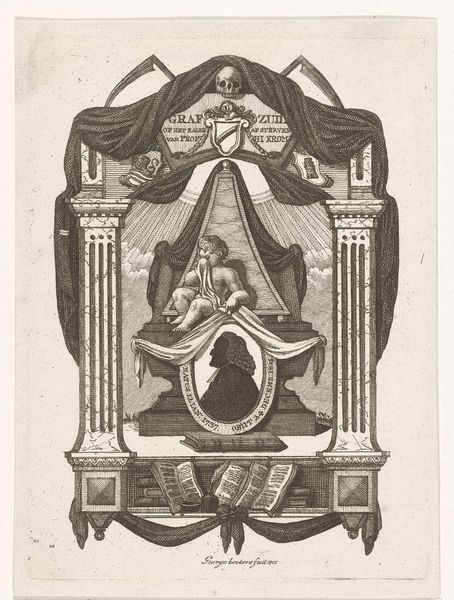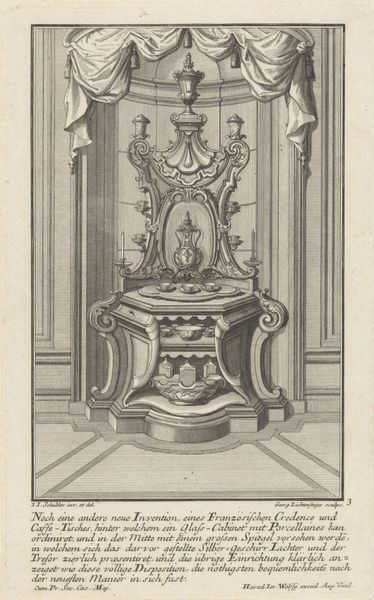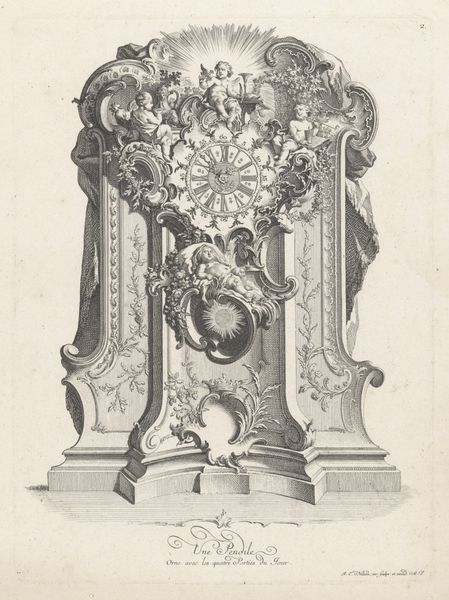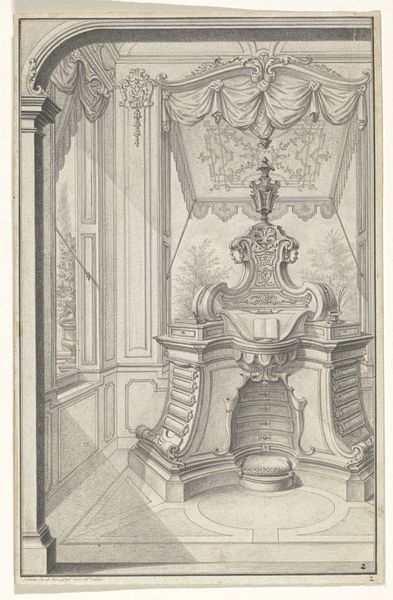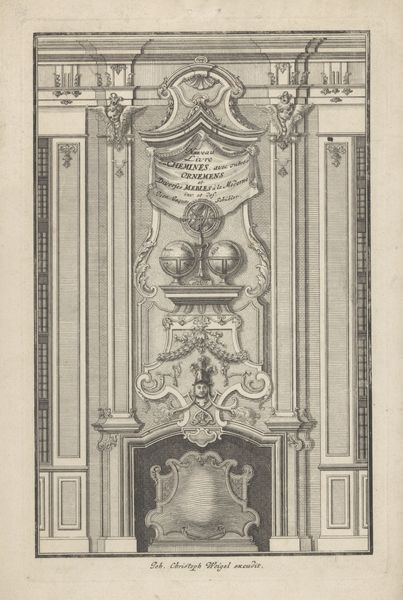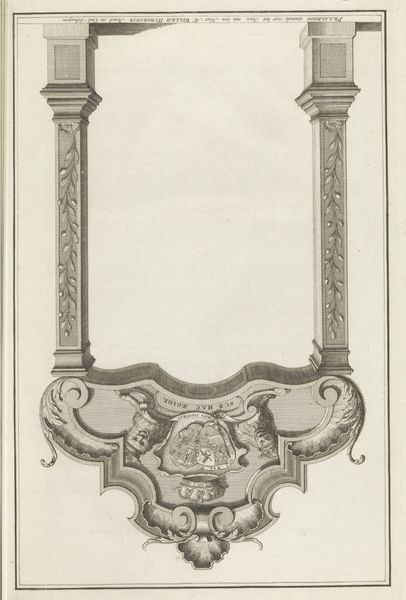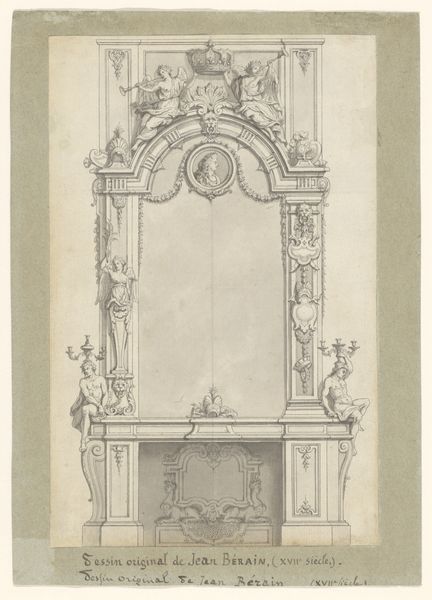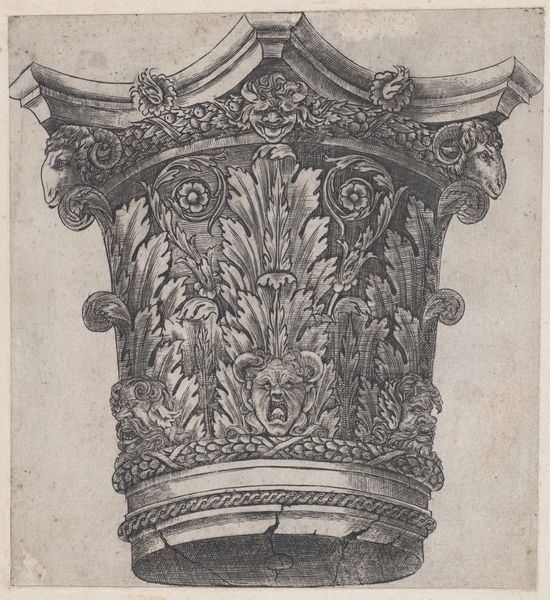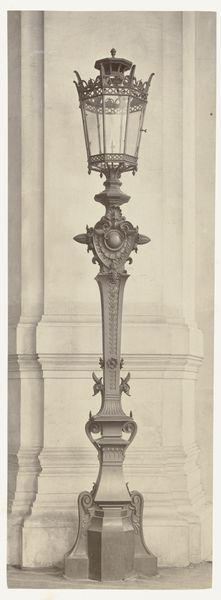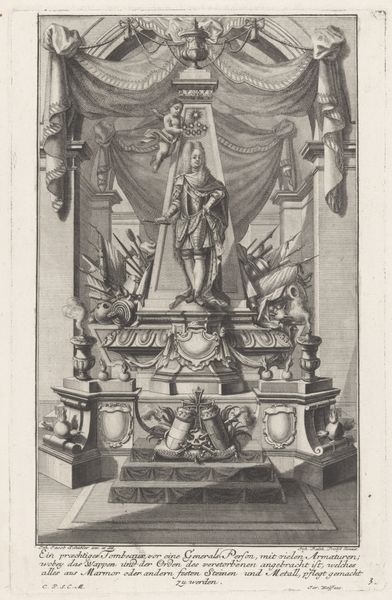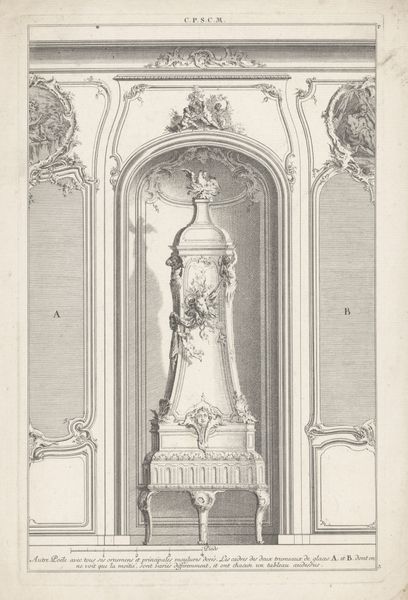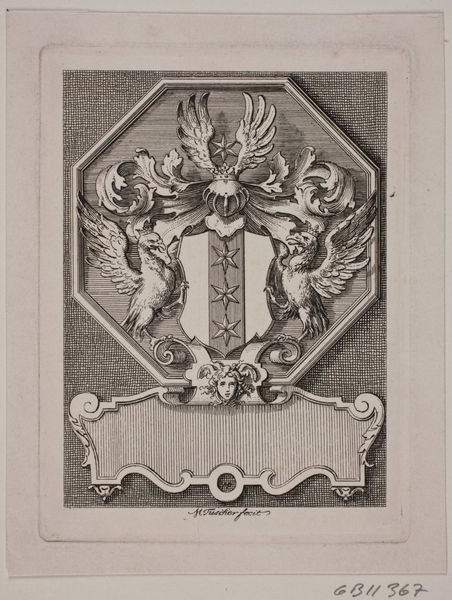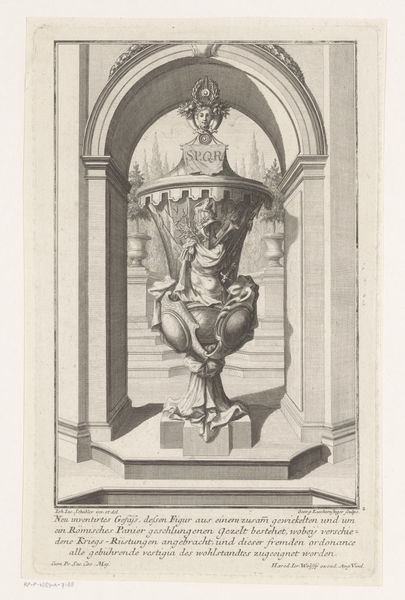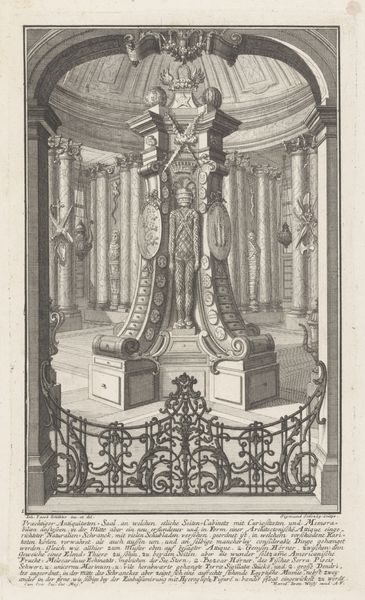
print, engraving, architecture
#
baroque
# print
#
geometric
#
line
#
engraving
#
architecture
Dimensions: height 291 mm, width 177 mm
Copyright: Rijks Museum: Open Domain
Editor: Here we have Johann Matthias Steudlin’s “Preekstoel,” an engraving from after 1724. The piece has a wonderfully theatrical quality, with that draped canopy and the swirling baroque ornament. How would you interpret this work, particularly within its historical context? Curator: This engraving speaks volumes about the social role of religious architecture in the 18th century. Notice how the pulpit isn’t just a functional object, but a carefully staged spectacle. The elaborate design, the use of perspective – it all suggests a performance meant to impress and persuade. Consider where this would have been situated within a church and the visual authority it would command. Editor: It really does feel like a stage set! Were these kinds of ornate pulpits common? Curator: Yes, but not just in churches. This particular image was part of a series showcasing designs. Prints like these were used as a tool for architectural aspiration and dissemination, to influence aesthetic and ideological preferences across Europe. To me, it speaks to the museum's ongoing shaping role, through acquisition, preservation and exhibition of architectural ideas. Where do you see the convergence of artistic ambition and institutional power reflected in Steudlin's print? Editor: That makes a lot of sense. It’s fascinating to consider how even an architectural rendering becomes a political statement in its own right. Curator: Precisely. And that understanding really enriches our appreciation, doesn't it? Editor: Absolutely. Seeing it as more than just a pretty picture—thinking about how the church uses that design—is quite enlightening.
Comments
No comments
Be the first to comment and join the conversation on the ultimate creative platform.
